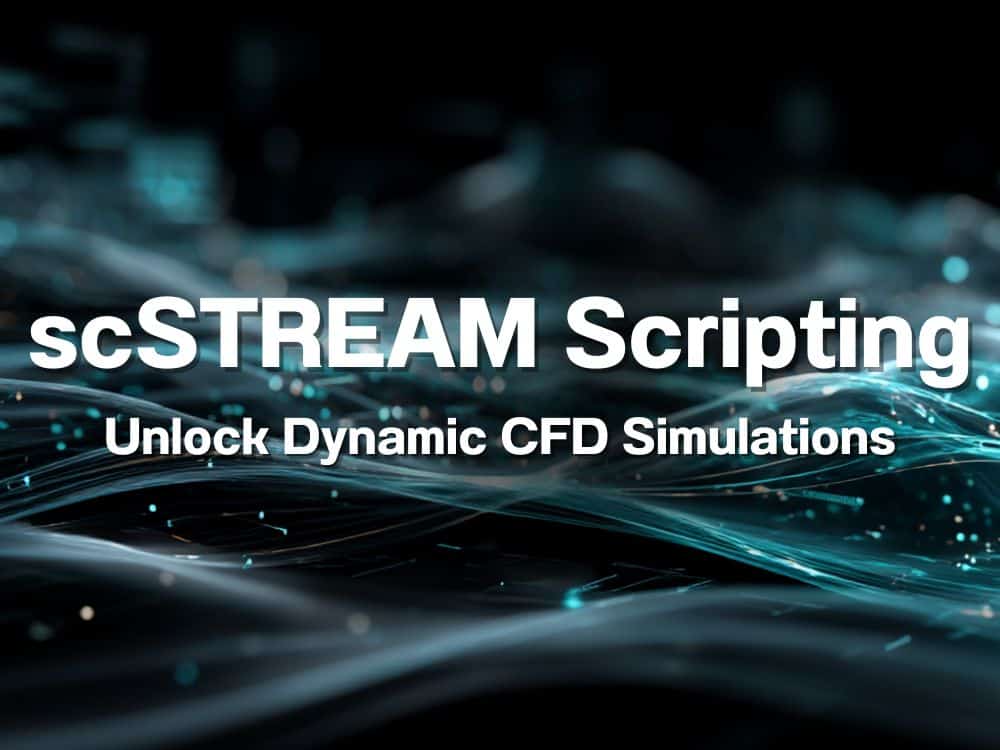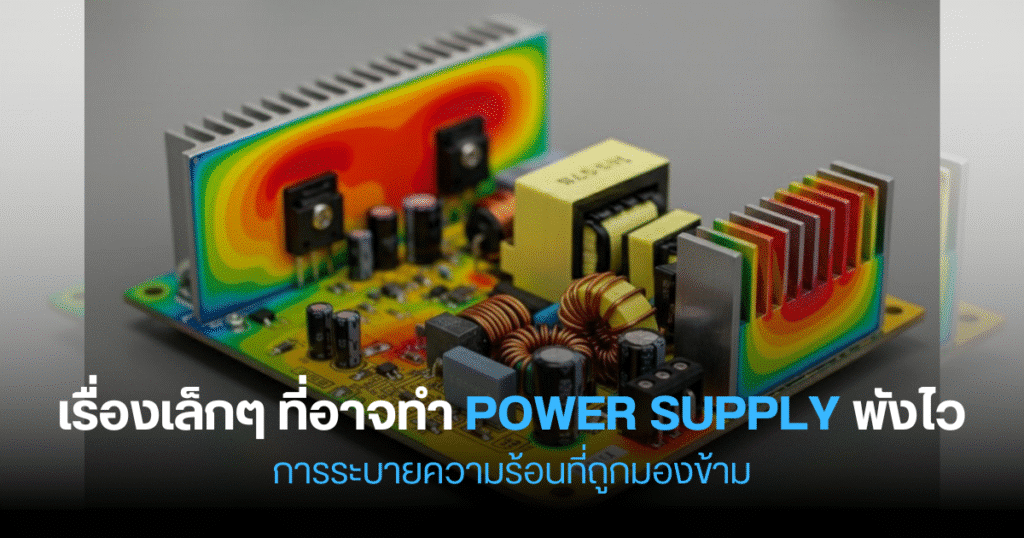เมื่อเร็วๆ นี้ Christophe Gayet, วิศวกรฝ่ายสนับสนุนทางเทคนิค (Technical Support Engineer) จาก Hexagon ผู้มีประสบการณ์กว่า 14 ปี ได้จัด Webinar แนะนำการเขียน Script ในโปรแกรม scSTREAM อย่างละเอียด คู่มือนี้ได้สรุปประเด็นสำคัญและแนวทางการนำ scSTREAM Scripting ไปประยุกต์ใช้งานจริง โดยเน้นถึงประโยชน์, วิธีการเริ่มต้นเขียน Script ด้วยตนเอง และตัวอย่างการใช้งานที่เข้าใจง่าย

Source: (SimAcademy Webinar) An Introduction for Scripting within scSTREAM
สารบัญ
ทำไมต้องใช้ scSTREAM Scripting?
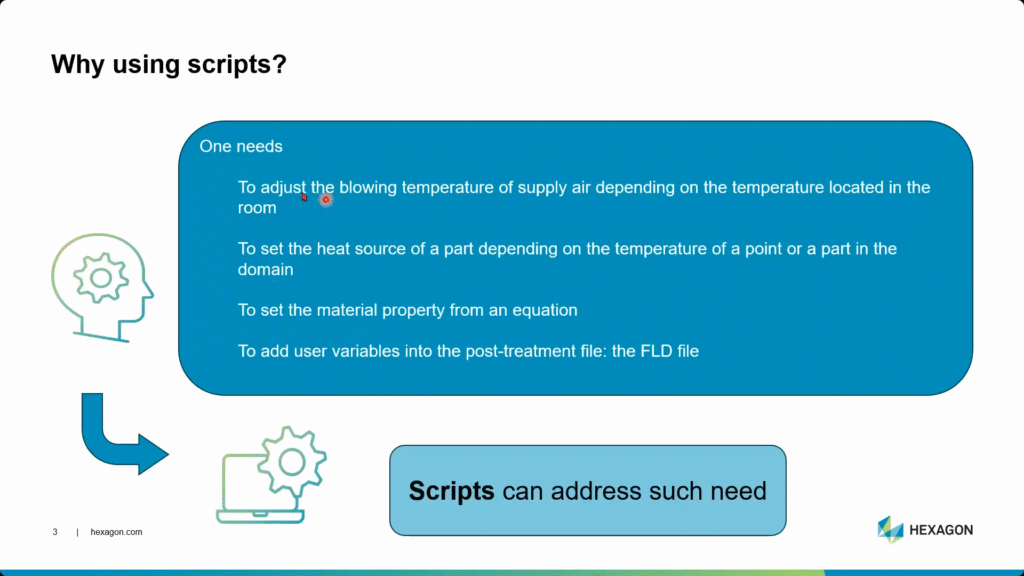
การเขียน Script ใน scSTREAM มีประโยชน์ในหลายกรณี เช่น:
- การปรับอุณหภูมิของลมที่เป่าออกมา (Blowing Temperature) แบบ Dynamic ตามอุณหภูมิภายในห้อง
- การกำหนดแหล่งกำเนิดความร้อน (Heat Sources) ที่ขึ้นอยู่กับข้อมูลอุณหภูมิตามตำแหน่งในพื้นที่
- การใช้คุณสมบัติของวัสดุที่กำหนดเองผ่านสมการ
- การเพิ่มตัวแปรและผลลัพธ์ที่ผู้ใช้กำหนดเองเข้าไปในไฟล์ Simulation
ประวัติการพัฒนา Script
ในยุคแรก scSTREAM อนุญาตให้มี User Functions ผ่านการแก้ไขและ Compile ไฟล์ ซึ่งจำกัดการใช้งานข้าม Platform แต่ scSTREAM Scripting ในปัจจุบันใช้ JavaScript ที่ฝังโดยตรงใน Project Files (.S files) ทำให้สามารถใช้งานข้าม Platform ได้ทันทีโดยไม่จำเป็นต้อง Compile เพิ่มเติม
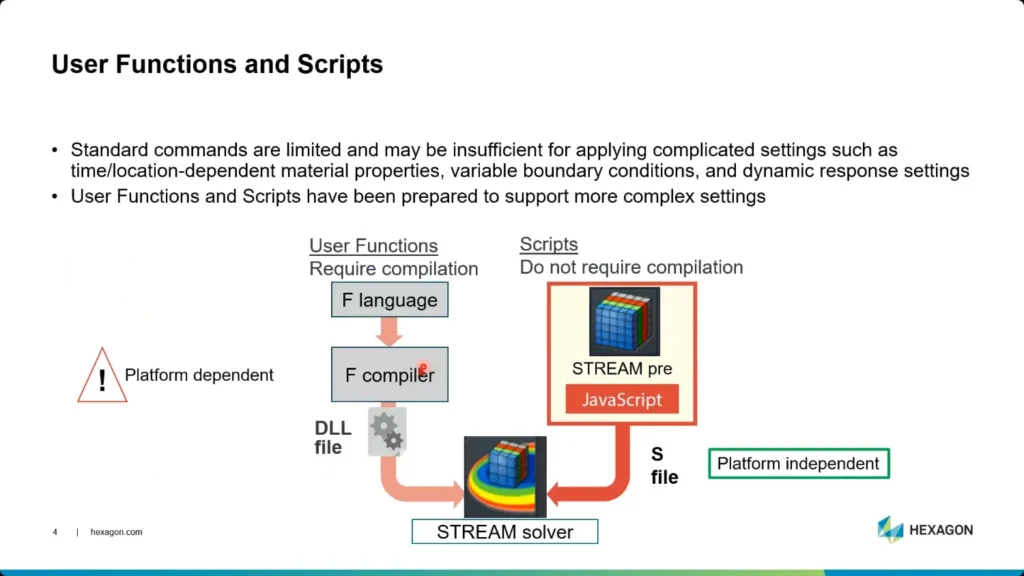
Source: (SimAcademy Webinar) An Introduction for Scripting within scSTREAM
ประเภทของ Scripts ใน scSTREAM
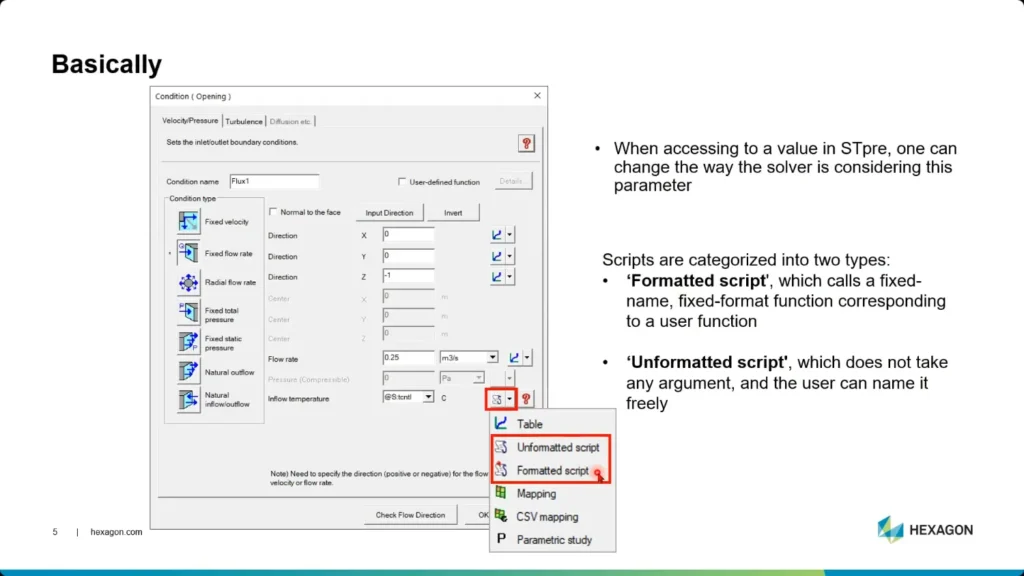
Unformatted Scripts
- เป็น Script ที่ไม่ต้องระบุ Arguments ทำให้สามารถเขียนโค้ดได้อย่างยืดหยุ่นและใช้งานได้หลากหลาย
- มีประโยชน์สำหรับการกำหนด Flux หรือ Heat Sources แบบ Dynamic โดยอิงตามพิกัดเชิงพื้นที่ (Spatial Coordinates)

Formatted Scripts
- เป็น Script ที่มี Context และ Arguments ที่กำหนดไว้ล่วงหน้า ใช้สำหรับตั้งค่า Parameter ของ Solver หรือดึงข้อมูลจาก Solver โดยเฉพาะ
- แบ่งออกเป็นหมวดหมู่ได้ดังนี้:
- Setting Functions: ใช้สำหรับกำหนดค่า Parameter ของ Solver
- Timing Functions: ใช้สั่งให้ Script ทำงาน ณ ช่วงเวลาที่กำหนดของการจำลอง
- Utility Functions: ใช้สำหรับดึงข้อมูลจาก Solver หรือบันทึกข้อความ (Log Messages)

ตัวอย่างการใช้งานจริง
Setting Functions
หนึ่งในแอปพลิเคชันที่พบบ่อยของ scSTREAM Scripting คือการตั้งค่า Heat Source แบบ Dynamic:
- กำหนด Formatted Script ในส่วน Solver Parameters โดยใช้ Arguments ที่สงวนไว้ เช่น UXV และ TELP
- ดึงข้อมูลพิกัดของ Element (Element Coordinates) หรือเงื่อนไขต่างๆ แบบ Dynamic เพื่อปรับค่า Heat Source
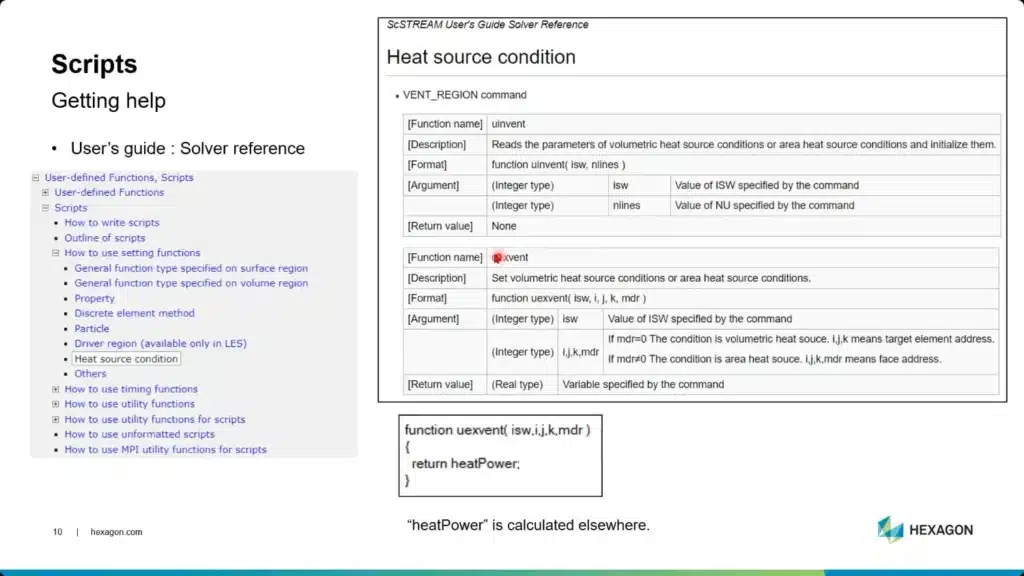
Source: (SimAcademy Webinar) An Introduction for Scripting within scSTREAM
Timing Functions
ใช้ USRPOS เพื่อ:
- สั่งให้ Script ทำงานตอนเริ่มต้น (Initialization), ณ รอบเวลา (Cycle) ที่กำหนด หรือก่อนที่จะทำการบันทึกไฟล์ผลลัพธ์
- บันทึกข้อมูลสำคัญ เช่น ค่า Global Variable Values ลงในไฟล์ .L โดยตรง เพื่อนำไปใช้ในขั้นตอน Post-Processing
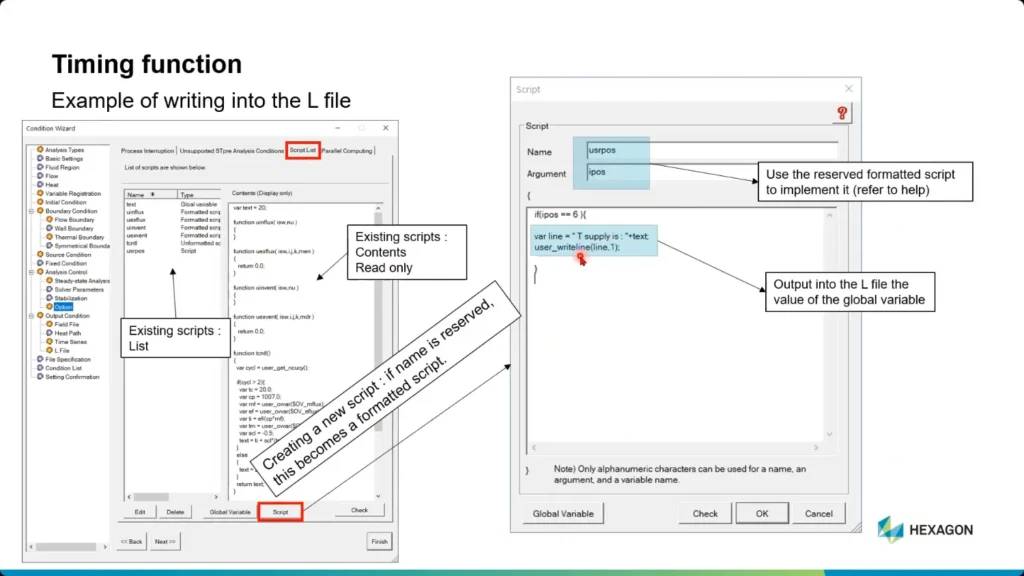
Utility Functions
- ดึงค่าเชิงกายภาพ (Physical Quantities) โดยใช้ ERCATCH หรือ USREARCATCH
- รับค่าปริพันธ์ (Integral) หรือค่าเฉลี่ยผ่าน Variable Registration เพื่อนำมาใช้ปรับ Script แบบ Dynamic
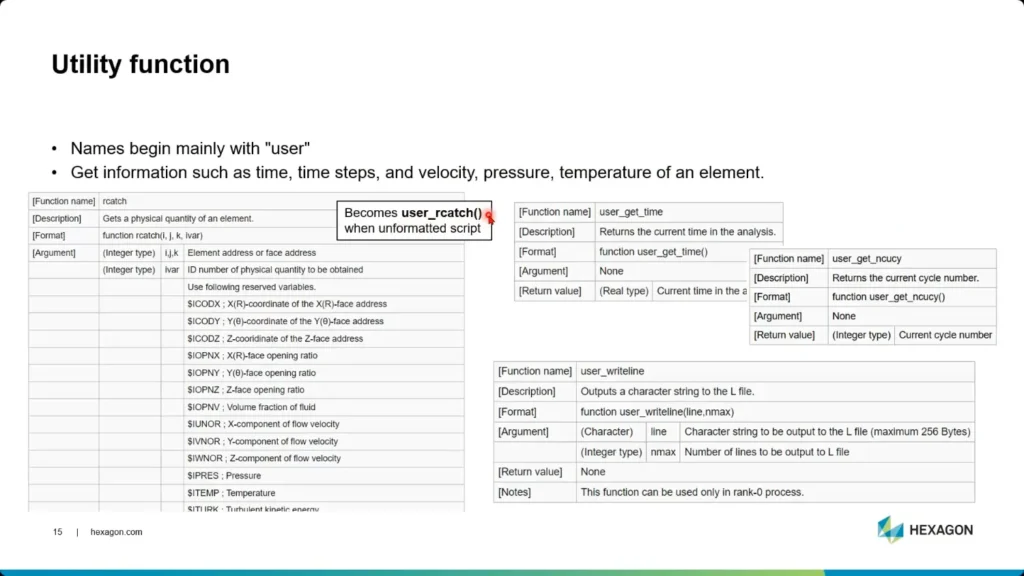
สถานการณ์ตัวอย่าง: การควบคุมอุณหภูมิแบบ Dynamic
ลองพิจารณาสถานการณ์ในห้องหนึ่ง ที่ต้องการควบคุมอุณหภูมิของลมที่จ่ายเข้ามา (Inlet Air Temperature) โดยอิงตามค่าเฉลี่ยอุณหภูมิของห้อง:
- Variable Registration: คำนวณค่าอุณหภูมิเฉลี่ยสำหรับพื้นที่ที่กำหนด
- Dynamic Inlet Temperature: ใช้ Script เพื่อปรับเปลี่ยนอุณหภูมิที่ Inlet แบบ Dynamic ตามค่าเฉลี่ยอุณหภูมิที่คำนวณได้
- Output Enhancements: เพิ่มผลลัพธ์ที่กำหนดเอง เช่น ค่าความแตกต่างของอุณหภูมิ เข้าไปในไฟล์ผลลัพธ์ (.FLD files) และไฟล์ Log (.L files) โดยตรง
ขั้นตอนการนำไปใช้:
- เปิดใช้งาน Variable Registration สำหรับ Volume และ Face เพื่อคำนวณค่าเฉลี่ยและ Flux
- กำหนด Formatted Scripts สำหรับเงื่อนไข Inlet แบบ Dynamic:
- คำนวณอุณหภูมิโดยใช้ตัวแปรที่ลงทะเบียนไว้ (Registered Variables)
- ปรับอุณหภูมิที่ Inlet ตามสัดส่วนของ Feedback ที่ได้จากอุณหภูมิห้อง
- ปรับปรุงผลลัพธ์:
- ใช้ Script สำหรับบันทึกข้อมูลเพิ่มเติมโดยใช้ USRPOS
- สั่งให้แสดงผลค่าความแปรผันของอุณหภูมิที่คำนวณได้ เพื่อการวิเคราะห์หลังการประมวลผล (Post-Analysis) ที่ละเอียดขึ้น
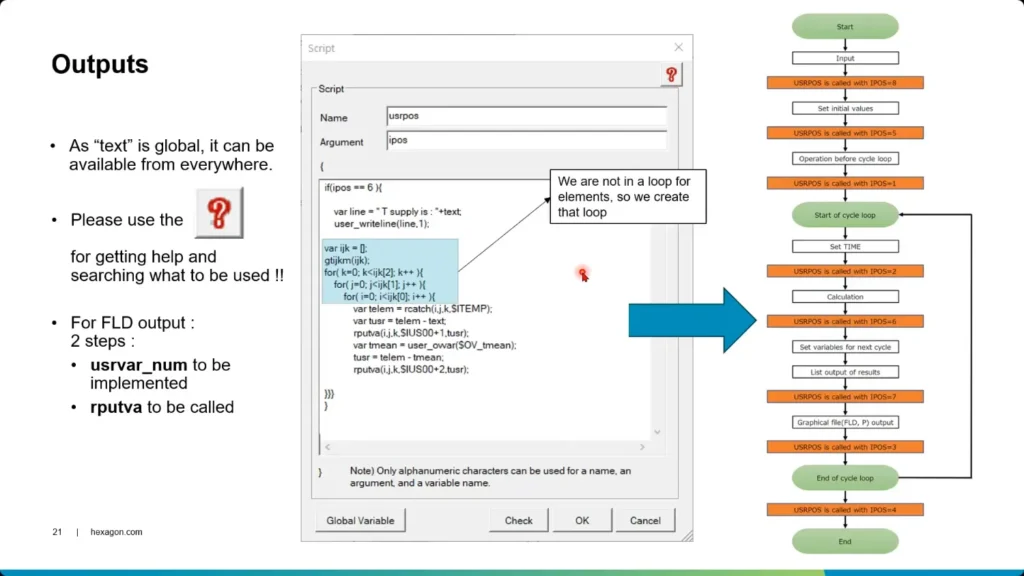
เคล็ดลับสำคัญ
- เมนูคลิกขวา: ใช้เมนูคลิกขวา (Right-click context menus) ให้เป็นประโยชน์ เพื่อเข้าถึงตัวแปรที่กำหนดไว้ล่วงหน้า, รายละเอียด Mesh, และ Function ที่มีให้ใช้งานได้อย่างรวดเร็ว
- Documentation: หมั่นเปิดอ่านคู่มือ scSTREAM Documentation เพื่อดูรายละเอียดของ Function และตัวอย่างของ scSTREAM Scripting
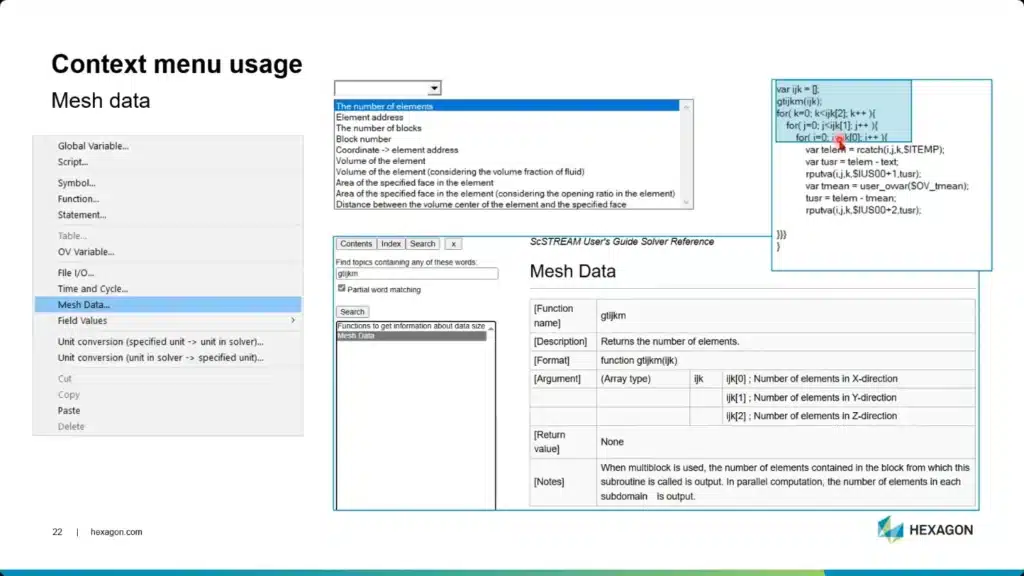
ถาม-ตอบ (Questions and Answers)
ในระหว่าง Webinar มีการตอบคำถามที่น่าสนใจหลายข้อ:
- ปัจจุบันยังไม่รองรับ Python Scripting โดยยังคงใช้ JavaScript เป็นภาษาหลักในการเขียน Script
- Script สามารถควบคุมการไหลของอากาศ (Airflow) แบบ Dynamic ตามอุณหภูมิในแต่ละพื้นที่ได้ ซึ่งเป็นประโยชน์อย่างยิ่งสำหรับ Data-Driven HVAC Simulations
- Script มีศักยภาพในการเปิดใช้งานการปรับเปลี่ยน (Dynamic Adjustments) Parameter ของ Simulation เช่น Timestep ตามเงื่อนไขของตัวแปร ซึ่งขึ้นอยู่กับความเข้ากันได้ของ Solver
สรุป
Webinar ของ Christophe ได้สรุปภาพรวมการใช้งานจริง, ความรู้พื้นฐานที่จำเป็น และตัวอย่างอย่างละเอียด เพื่อให้สามารถนำ Scripting ใน scSTREAM ไปใช้ได้อย่างมีประสิทธิภาพ การนำ scSTREAM Scripting มาปรับใช้จะช่วยเพิ่มความยืดหยุ่นและระบบอัตโนมัติในการทำ Simulation ได้อย่างมาก ซึ่งจำเป็นอย่างยิ่งสำหรับสถานการณ์ที่ซับซ้อนและเปลี่ยนแปลงตลอดเวลาในงานด้านพลศาสตร์ของไหลเชิงคำนวณ (Computational Fluid Dynamics – CFD)
อ้างอิง
หากต้องการรับชม Webinar ฉบับเต็ม สามารถเข้าไปที่: SimAcademy Webinar – An Introduction for Scripting within scSTREAM

